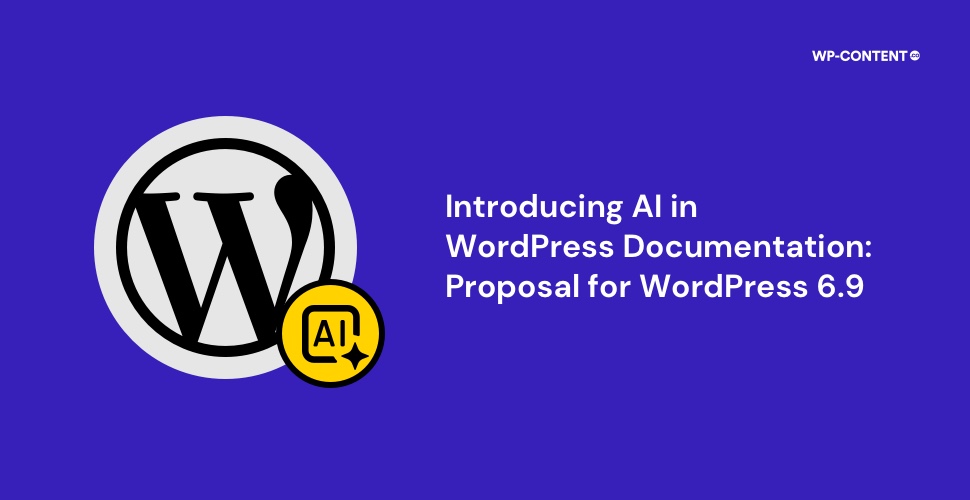The WordPress Documentation Team has introduced a proposal for an AI-assisted workflow for creating new end-user documentation for the upcoming WordPress 6.9 release. The proposal aims to improve contributor efficiency while maintaining editorial control and accuracy.
The workflow focuses solely on generating structured drafts for new documentation, with contributors overseeing fact-checking, editing, and publication. Future phases may expand to include automated updates and integration with additional tools.
The Various Stages of the Proposed AI Workflow
1. Human-Driven Planning
The first step of the process is led entirely by human contributors. This includes specifying what kind of documentation is needed, identifying the target audience, and determining the format of the article, such as a how-to guide, reference page, or landing content.
2. AI Drafting—With Guardrails
In the second step, AI is used solely to generate an initial draft and not the final version as highlighted, “ AI should be used only to produce a first draft, not a finished product.” Jenni McKinnon also highlighted what the contributors should take note of when prompting, such as the document type and target audience, and also ensure adherence to the Docs Style Guide and the WordPress Brand Style Guide.
3. Fact-Checking by Humans
The third step involves contributors fact-checking the AI-generated draft. The draft is cross-checked against sources like the Core codebase, GitHub pull requests, Trac tickets, and relevant documentation. The draft is also checked for grammatical structure and should be reviewed by another contributor.
4. Style & Language Review
The fourth step focuses on reviewing the content for style consistency and inclusivity. This involves using plain language, avoiding passive voice, complex jargon, and so on.
5. Accountable Publishing
The fifth stage emphasizes accountability during publication. Contributors should clearly note any use of AI in both the article and its GitHub commit. Also, the contributor should add a brief changelog summary and list contributors for release credits. They should also mark the article if a follow up is needed, as highlighted, “ Flag the article for follow-up if the feature it covers is experimental or subject to change.”
6. Reflection and Improvement
The final step focuses on reflection and improvement. Contributors should also note what worked and didn’t, share insights, and suggest improvements.
The proposal also outlined several safeguards to maintain the quality and reliability of WordPress.org documentation. These include requiring human review for all AI-generated content, not using private or unpublished material to train AI models, and ensuring drafts are thoroughly checked by humans.
“The goal of this workflow is to reduce friction in the drafting process so contributors can spend more time on high-value tasks like strategy, mentorship, and refining content.”
The Goal and Future Vision
Jenni McKinnon also highlighted the goal of workflow as, “ The goal of this workflow is to reduce friction in the drafting process so contributors can spend more time on high-value tasks like strategy, mentorship, and refining content. This approach upholds the core values of the WordPress project by emphasizing collaboration, transparency, and inclusion.”
The team will also be developing relevant prompts to assist with documentation as stated, “ For the upcoming WordPress 6.9 release, we will begin developing AI prompts in advance of the release cycle to support the creation of new documentation articles. This will be a collaborative, iterative effort involving contributors from the Docs Team and beyond.”
These prompts will also be tested as highlighted, “ We’ll test prompts during regular contributor meetings, in Slack, and through hands-on documentation issues tied to 6.9….”
Currently the proposed workflow is for WordPress 6.9, but in the future, it may extend to updating existing content and incorporating automation tools like AI-generated screenshots from the WordPress Playground, as stated, “ This proposed AI workflow will apply to WordPress 6.9….will expand to include AI-assisted updates to existing articles and explore automation tools such as AI-generated screenshots from the WordPress Playground.”



